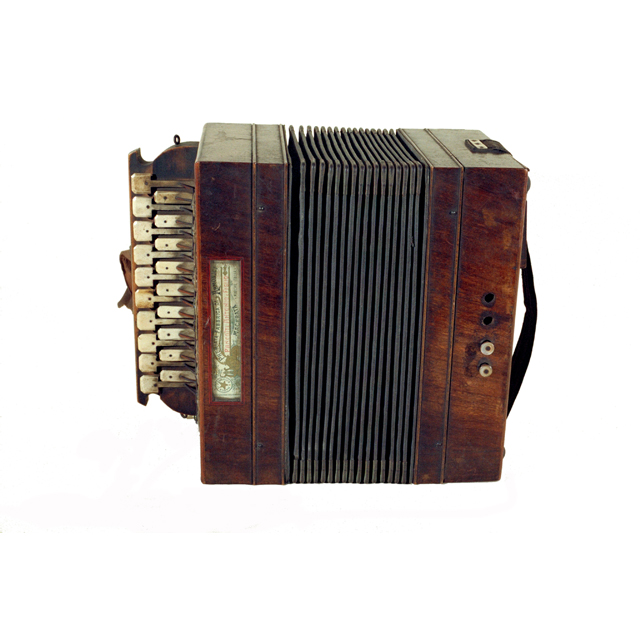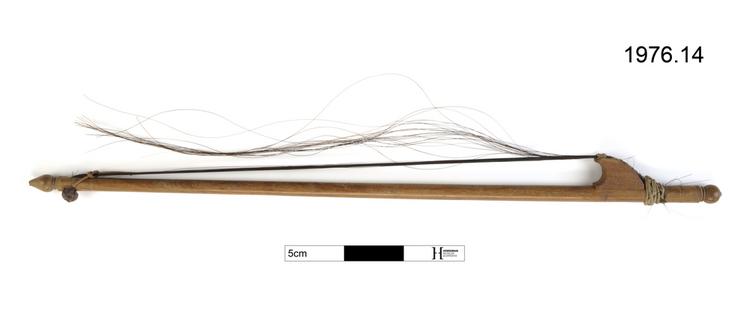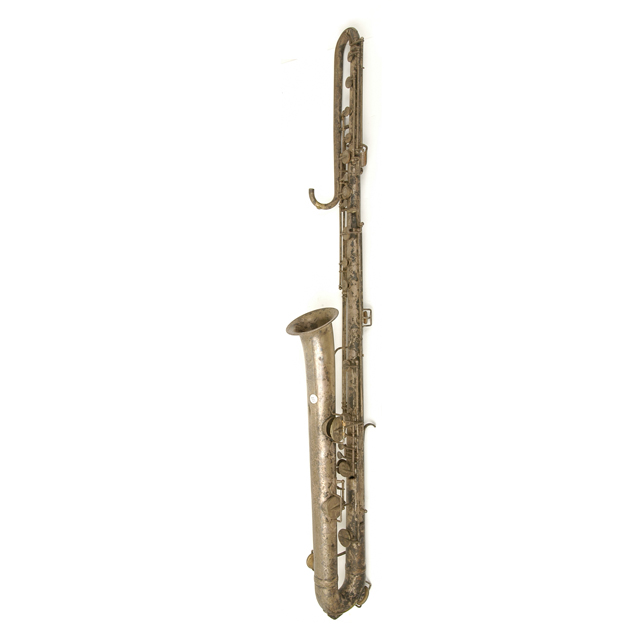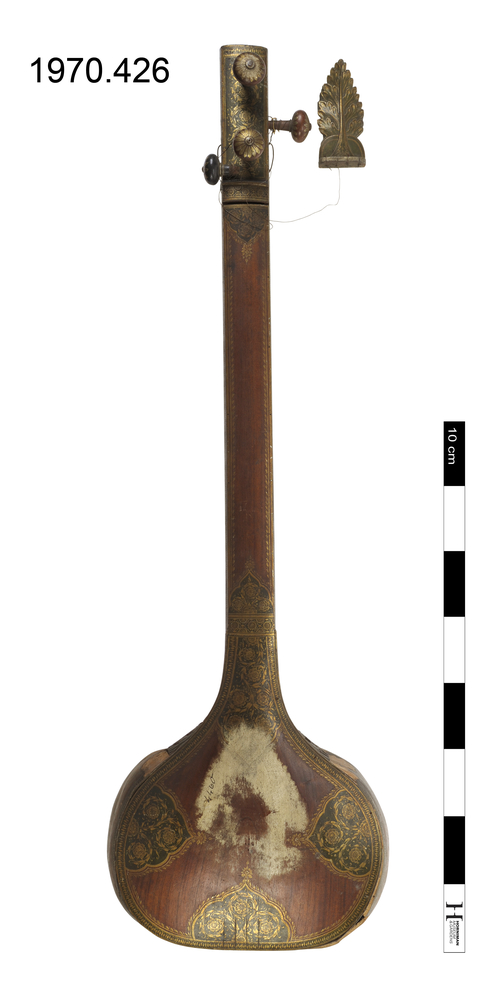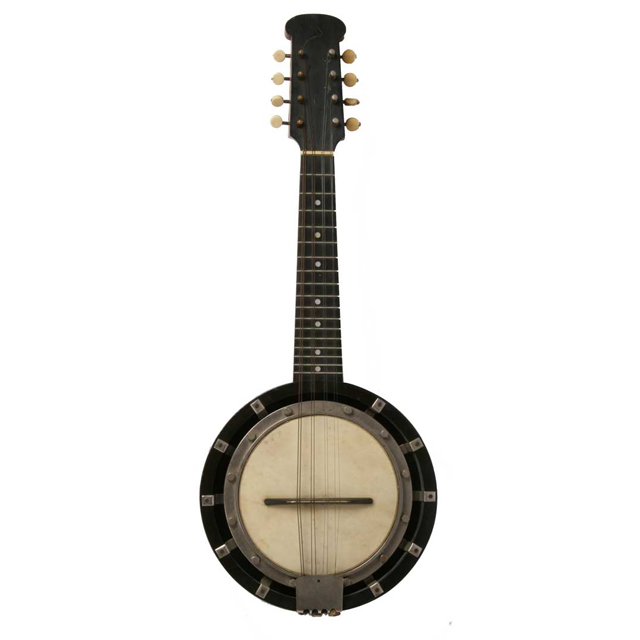


Mandolin banjo. Hide sound table stretched across steel frame which is positioned in a large circular recess in the dark hardwood body. Metal bridge positioned in centre of membrane. Eight wire strings in four courses. The object name for this instrument was originally 'banjo-mandolin' it has been changed to 'mandolin banjo' on the advice of Bob Keeble of Brown Dog Banjos. The british convention for hybrid instruments was to name the neck before the body, so a banjo-mandolin would be tuned as a banjo, whereas this is tuned as a mandolin.
John Alvey Turner, the maker of this instrument, was also an instrument dealer and a luminary of the British banjo, mandolin, and guitar club movement of the early 20th century. The hybrid banjo-mandolin resulted when out-of-work mandolin players of the time requested an instrument that was constructed and sounded like the more popular banjo but was strung and played as a mandolin. The instrument has the same scale length as a mandolin, with four equally tuned pairs of strings and a bridge resting on a resonant banjo-like skin head, which also greatly increases the volume of the instrument compared to a standard mandolin. This instrument was formerly the property of Violet Elizabeth Mitchell, who played it in an amateur ensemble from the 1950s to the 1970s. The ensemble met each week at the house of Mr Barnett in Crofton Park. Mrs Mitchell also played the violin and the mandolin.



